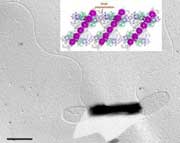When we taste or smell, the sensory receptors in our nerve cells detect substances and send information to the brain. Within the brain, numerous other cells process this incoming information to identify what we are tasting or smelling. However, bacteria are single-celled organisms that use different receptors to perceive their surrounding environment. 
The receptors of bacteria combine to form a “grid-like network” on the bacterial surface, amplifying even the slightest changes in the environment, which leads to specific cellular responses. Bacteria can detect changes as small as 0.1% of their surrounding environment. Scientists believe that no other system has been found to be so sensitive to environmental changes.
The grid mechanism of receptors in bacteria could be applied to produce molecular-scale sensing devices. These devices would be used to detect chemicals, light, pH levels, or heavy metals with high sensitivity.
Lưu Hoàng Lương


















































